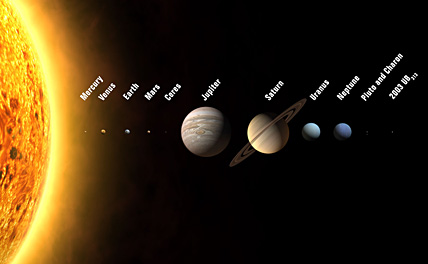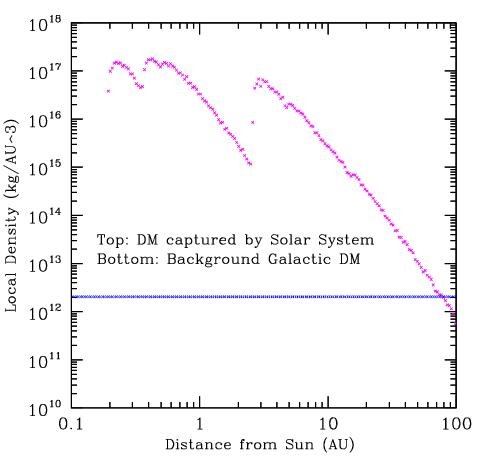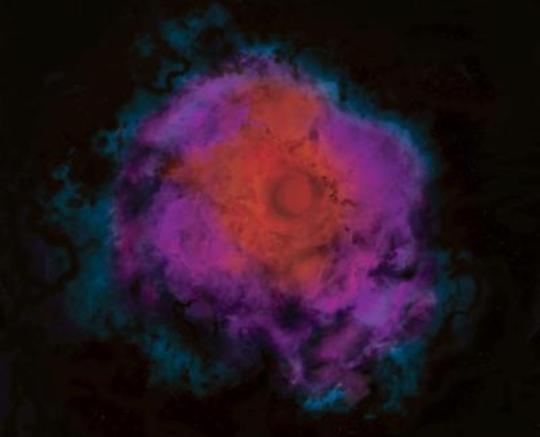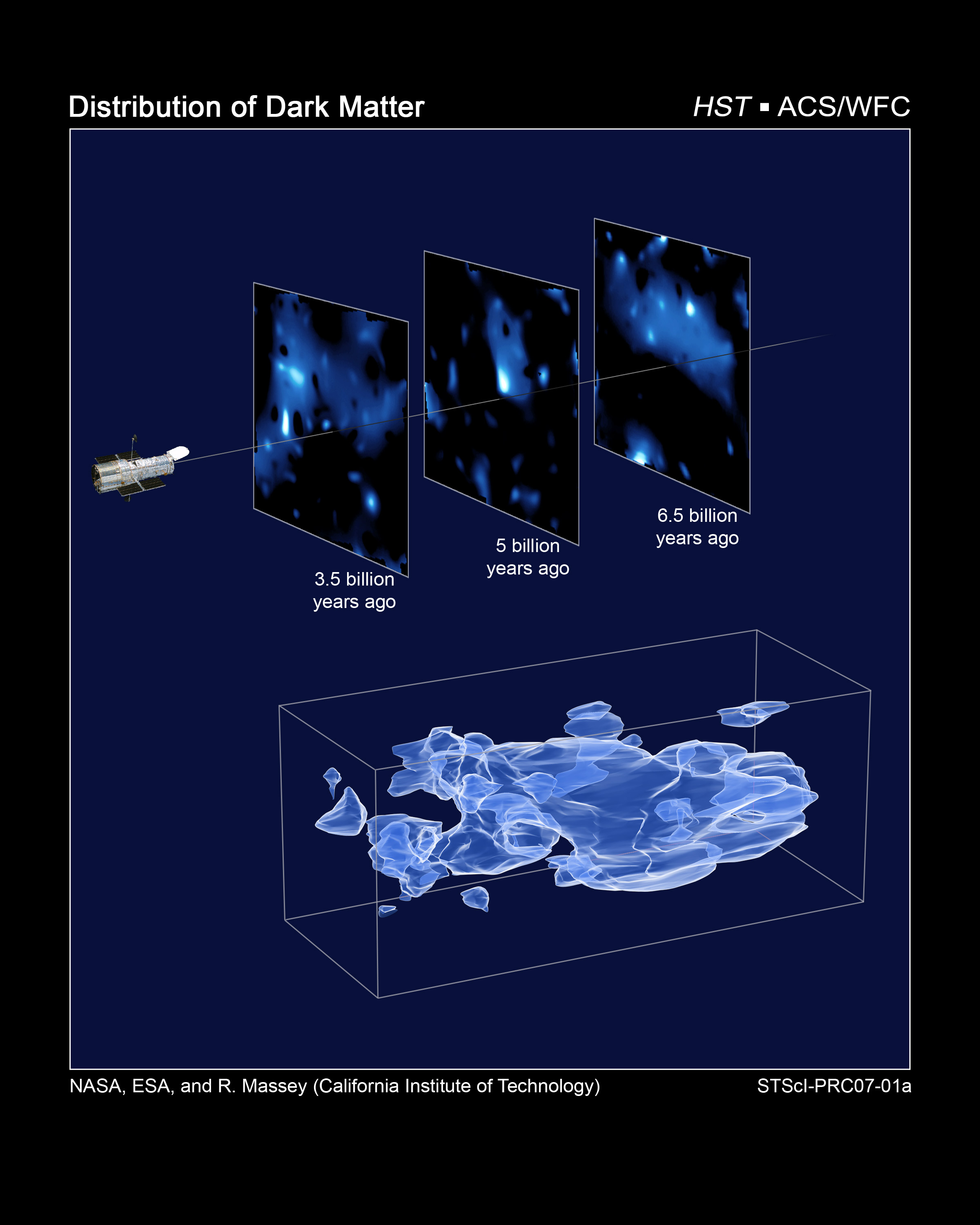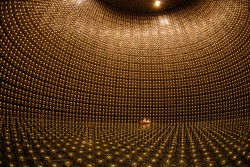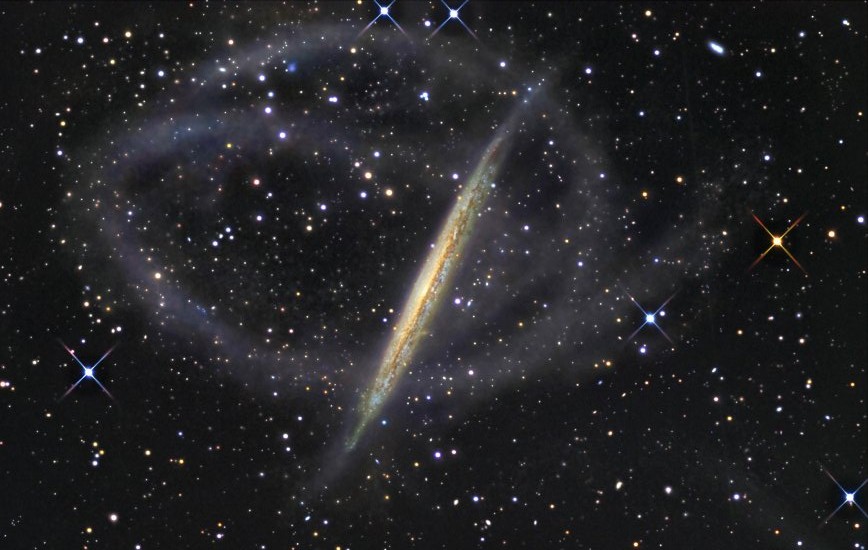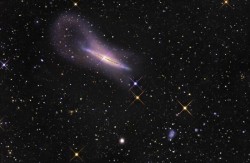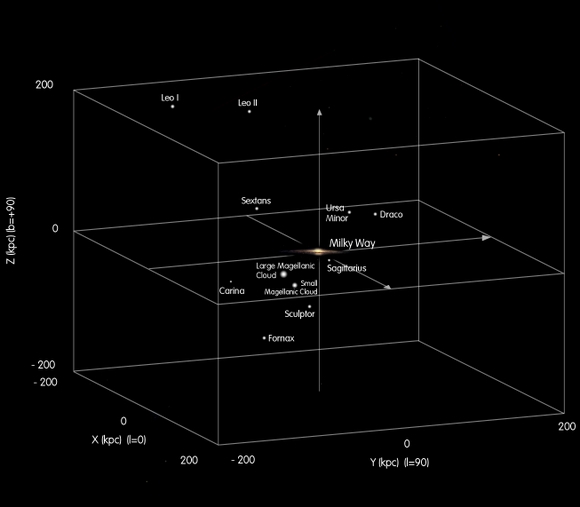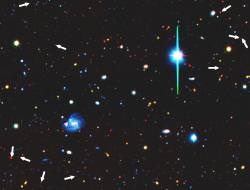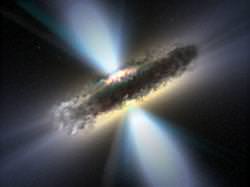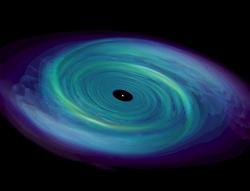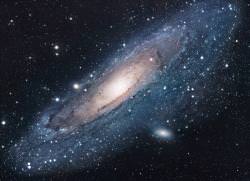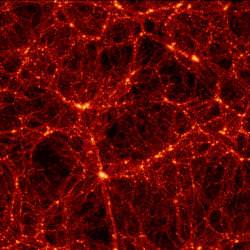Dark matter was theorized to exist relatively recently, and we’ve come a long way in understanding what makes up a whopping 23% of our Universe. Our own galaxy is surrounded by a halo of dark matter that adds to its mass. A recent paper on the dark matter closer to home – right here in our own Solar System – reveals that it is denser and more massive than in the galactic halo.
Dark matter is just plain weird stuff. It doesn’t give off light, has mass and reacts gravitationally with “normal” matter – the stuff that we and our planet and the stars are composed of. Just like normal matter, it “clumps” up, or accretes, because of this gravitational attraction; we find more dark matter near galaxies than in the vast expanses between them.
Dark matter isn’t just far off in the Milky Way or somewhere on the other side of the Universe, though: it’s right here at home in our Solar System. In a recent paper submitted to Physical Review D, Ethan Siegel and Xiaoying Xu of the University of Arizona analyzed the distribution of dark matter in our Solar System, and found that the mass of dark matter is 300 times more than that of the galactic halo average, and the density is 16,000 times higher than that of the background dark matter.
Over the history of the Solar System, Xu and Siegel calculate that 1.07 X 10^20 kg of dark matter have been captured, or about 0.0018% the mass of the Earth. To get a handle on this number, the mass of Ceres – the largest object in the asteroid belt between Mars and Jupiter – is about 9 times this amount.
Siegel and Xu calculated how much dark matter the Solar System has swept up over it’s 4.5 billion-year lifespan by modeling the composition of the background dark matter halo in the orbit of the Solar System around the galaxy, and calculating just how much dark matter would be trapped by the Solar System as it moves through this halo. They ran this calculation for the Sun and each one of the eight planets separately, giving the distribution of the matter throughout the Solar System, as well as the total amount captured.
Much like when you drive your car through a light snowfall, dark matter “sticks” to the Solar System when it is gravitationally bound by the Sun and planets. Just as some of the snow melts on your windshield (hopefully), some doesn’t stick to the hood and most just flies right by, dark matter isn’t distributed evenly throughout our Solar System, either. Some planets have more dark matter surrounding them than others, depending on where they are. Shown below is the density distribution of the dark matter in the Solar System
The first spike is Mercury, and the next two spikes are Venus and Earth (Mars doesn’t show up). The next is Jupiter, followed by a small bump from Saturn and finally Uranus and Neptune combined create the last small bump.
How does the local dark matter effect interactions in the Solar System? Well,it doesn’t have a large effect on the orbits of the planets, nor does it slow down the Solar System in its orbit around the galactic center appreciably.
“Planetary orbits, if there were enough dark matter present, would have their perihelia precess faster than if there were no dark matter. The amount of dark matter allowed from these observations is considerably greater than the amount I predict. The errors on the measurements of perihelion precession are in units of hundredths of an arc second per century…Even if you assume the dark matter is at rest with respect to the galaxy that the Solar System moves through (which is the extreme example), the Sun is of order 10^30 kg; capturing a 10^20 kg clump of dark matter will slow you down by about 20 microns/second over the lifetime of the Solar System. So that would be small.” – Ethan Siegel in an email interview.
And, alas, the mystery of the Pioneer anomaly is not going to be solved by this revelation, as the mass of the captured dark matter is not enough to explain the odd motions of that spacecraft.
The discovery of a higher density and mass of dark matter in our neighborhood may aid in the study and detection of dark matter, though. Knowing the mass and density distribution of the local dark matter – and thus knowing how much and where to look for it – will provide astronomers looking into solving exactly what it’s made up of with more information .
“Our determination of the local dark matter density and velocity distribution are of great importance to direct detection experiments. The most recent calculations that have been carried out assume that the properties of dark matter at the Sun’s location are derived directly from the galactic halo. By comparison, we find that terrestrial experiments should also consider a component of dark matter with a density 16,000 times greater than the background halo density,” wrote Xu and Siegel.
Source: Arxiv, email interview with Ethan Siegel

